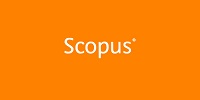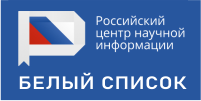EFFECT OF DIETARY SUPPLEMENTATION WITH FOSSIL SHELL FLOUR ON ENTERIC METHANE OUTPUT AND POSITION-DEPENDENT VARIATIONS IN DOHNE-MERINO WETHERS
Аннотация
This study aimed to investigate the influence of fossil shell flour (FSF) supplementation levels on Dohne-Merino wethers’ position on enteric methane output. Twenty-four Dohne-Merino wethers (20.0±1.50 kg B.W.) were randomly assigned for 84 days to either of four dietary treatments: basal or basal diet supplemented with 2%,4% or 6%FSF on a dry matter basis. The enteric methane output was measured using a portable Laser Methane Detector (LMD) machine during feeding, standing, and resting activities. The highest volume of enteric methane was obtained from wethers supplemented with 4%, followed by 6%, 0%, and 2% FSF. Higher enteric methane emission was observed for resting wethers than those feeding and standing (P < 0.05). Including fossil shell flour in Dohne-merino wethers’ diets at 4% and 6% increases enteric methane output (P<0.05). Dohne-merino sheep emit more enteric methane when resting than when feeding or standing idle.
Скачивания
Литература
References
Intergovernmental Panel on Climate Change (IPCC). Press Release 8 October 2018. (accessed on 11/04/2019)
Moss A.R., Jouany J.P., Newbold J. Methane production by ruminants: its contribution to global warming. Annales de Zootechnie, 2000, vol. 49, pp. 231–253. https://hal.science/hal-00889894
Alemu A.W., Dijkstra J., Bannink A., France J., Kebreab E. Rumen stoichiometric models and their contribution and challenges in predicting enteric methane production. Anim. Feed Sci.Technol., 2011, vol. 166–167, pp. 761–778. https://doi.org/10.1016/j.anifeedsci.2011.04.054
Otter L. The South African agricultural GHG inventory. Department of Agriculture, Forestry and Fisheries, 2010. South Africa.
Ogino A., Orito H., Shimadad K., Hirooka H. Evaluating environmental impacts of the Japanese beef cow-calf system by the life cycle assessment method. Anim. Sci. J., 2007, vol. 78, pp. 424–432. https://doi.org/10.1111/j.1740-0929.2007.00457.x
Food and Agriculture Organization (FAO). Statistical Yearbook, 2013. Rome, Italy.
Tanaka K., O’Neill B.C. The Paris Agreement zero-emissions goal is not always consistent with the 1.5 °C and 2 °C temperature targets. Nat. Clim. Change, 2018, vol. 8, pp. 319–324. https://doi.org/10.1038/s41558-018-0097-x
Wiedemann S.G., Yan M.J., Henry B.K., Murphy C.M. Resource use and greenhouse gas emissions from three wool production regions in Australia. J. Clean. Prod., 2016, vol. 122. pp. 121–132. https://doi.org/10.1016/j.jclepro.2016.02.025
Fraser M.D., Fleming H.R., Theobald V.J., Moorby J.M. Effect of breed and pasture type on methane emissions from weaned lambs offered fresh forage. J. Agric. Sci., 2015, vol. 153(6), pp. 1128–1134. https://doi.org/10.1017/S0021859615000544
Intergovernment Panel on Climate Change (IPCC). guidelines for National Greenhouse Gas Inventories. Prepared by the National Greenhouse Gas Inventories Programme. Eds: Eggleston H.S., Buendia L., Miwa K., Ngara T., Tanabe K. Published: IGES, 2006. Tokyo, Japan.
Australian National Greenhouse Accounts: National Inventory Reports (ANIR). Climate Change and Energy Efficiency, Commonwealth of Australia, 2009. Canberra, ACT.
Chaturvedi I., Dutta T.K., Singh P.K., Sharma A., Kumar M., Rao B. Effect of Herbal Feed Additives on IVDMD, Methane and Total Gas Production Via in-vitro Study. J. Agroecol. Nat. Resour. Manag., 2014, vol. 1(2), pp. 108-112.
Sallaku E., Vorpsi V., Jojic E., Sallaku F., Dodona E. Evaluation of methane emissions from animal farms in Shkodra district-Albania. Res. J. Agric. Sci., 2011, vol. 43, pp. 484- 489.
Food and Agriculture Organization (FAO). Statistical Yearbook. 2017. Rome, Italy
McMaster, C. Birth of a breed. The Dohne Merino Story. Simon Says Advertising, 2015. Port Elizabeth, RSA.
Cardellino, R. 2016. The Dohne In South America. Cardellino Delta Consultants, 2016. Montevideo, Uruguay.
Scholtz M.M., Van Ryssen J.B.J., Meissner H.H., Laker M.C. A South African perspective on livestock production in relation to greenhouse gases and water usage. South African Journal of Animal Science. 2013, vol. 43(3), pp. 247-254. http://dx.doi.org/10.4314/sajas.v43i3.2
Roessler R., Chefor F., Schlecht E. Using a portable laser methane detector in goats to assess diurnal, diet- and position-dependent variations in enteric methane emissions. Comput. Electron. Agric. 2018, vol. 150, pp. 110-117. https://doi.org/10.1016/j.compag.2018.04.010
Washaya S., Mupangwa J., Muchenje V. Chemical composition of Lablab purpureus and Vigna unguiculata and their subsequent effects on methane production in Xhosa lop-eared goats. S. Afr. J. Anim. Sci., 2018, vol. 48(3), pp. 445-458. http://dx.doi.org/10.4314/sajas.v48i3.5
Thota P., Mahender S.C., Ramana D.B.V. Effect of Probiotic Supplementation on Nutrient Digestibilities, Growth Performance and Enteric Methane Emissions in Deccani Ram Lambs. J. Anim. Res., 2017, vol. 7(6), pp. 1009-1017. https://doi.org/10.5958/2277-940X.2017.00152.8
Ma T., Chen D., Tu Y., Zhang N., Si B., Deng K., Diao Q. Effect of supplementation of allicin on methanogenesis and ruminal microbial flora in Dorper crossbred ewes. Journal of Animal Science and Biotechnology. 2016, vol. 7(1), pp. 1-7. https://doi.org/10.1186/s40104-015-0057-5
Ikusika O.O., Mpendulo C.T., Zindove T.J., Okoh A.I. Fossil Shell Flour in Livestock Production: A Review. Animals, 2019, vol. 9(3), pp. 1–20. https://doi.org/10.3390/ani9030070
Koster H. Diatomite in Animal Feeds. 2013. https://www.agrisilica.co.za/en/8-diatomite-in-animal-feeds
Chen Y., Liu K. Preparation of granulated N-doped TiO2/diatomite and its application of visible light degradation and disinfection. Power Tech., 2016, vol. 303, pp. 176-191. http://dx.doi.org/10.1016/j.powtec.2016.09.038
National Research Council (NRC). Nutrient requirements of small ruminants: sheep, goats, cervids, and new world camelids. 2007. Washington, D.C. USA.
Association of Officiating Analytical Chemists (AOAC). Official Method of Analysis Association of Officiating Analytical Chemist, 18th ed.; Association of Officiating Analytical Chemists: Washington, DC, USA, 2005.
Chagunda M.G.G., Ross D., Roberts D.J. On the use of a laser methane detector in dairy cows. Comput. Electron. Agric., 2009, vol. 68(2), pp. 157–160. https://doi.org/10.1016/j.compag.2009.05.008
Chilonda P., Otte J. Indicators to monitor trends in livestock production at national, regional and international levels. Livestock Research for Rural Development, 2006, vol. 18(8), article 117. https://lrrd.cipav.org.co/lrrd18/8/chil18117.htm (accessed on 21/11/2019).
Shibata M., Terada F., Iwasaki K., Kurihara I., Nishida T. Methane production in heifers, sheep and goats consuming various hay concentrate ratio diets. Anim. Sci. Technol., 1992, vol. 64, pp. 790-796. https://www.jstage.jst.go.jp/article/chikusan1924/63/12/63_12_1221/_pdf
Howden S.M., Reyenga P.J. Methane emissions from Australian livestock: implications of the Kyoto Protocol. Aust. Journal of Agric. Res.,1999, vol. 50(8), pp. 1285–1292. https://doi.org/10.1071/AR99002
Statistical Analysis System(SAS) version 9.1. Inst. Inc., Cary, NC, USA.
Tao H., Guo F., Tu Y., Si B., Xing Y., Huang D., Diao Q. Effect of weaning age on growth performance, feed efficiency, nutrient digestibility and blood-biochemical parameters in Droughtmaster crossbred beef calves. Asian-Australas J Anim Sci., 2018, vol. 31(6), pp. 864–872. https://doi.org/10.5713/ajas.17.0539
Ramin M., Huhtanen P. Development of equations for predicting methane emissions from ruminants. J. Dairy Sci., 2013, vol. 96(4), pp. 2476–2493. https://doi.org/10.3168/jds.2012-6095
Du Toit C.J.L., van Niekerk W.A., Meissner H.H. Direct greenhouse gas emissions of the South African small stock sectors. South African J. Anim. Sci., 2013, vol. 43, pp. 340–361. https://doi.org/10.4314/sajas.v43i3.8
Emeruwa C.H. Growth Performance of West African Dwarf Sheep Fed Diets Supplemented with Fossil shell flour., University of Ibadan, Nigeria. 2016.
Newbold C.J., Lassalas B. J.P. The importance of methanogens associated with ciliate protozoa in ruminal methane production in vitro. Lett. Appl. Microbiol., 1995, vol. 21(4), pp. 230–234. https://doi.org/10.1111/j.1472-765x.1995.tb01048.x
Chagunda M.G.G. Opportunities and challenges in using the Laser Methane Detector to monitor enteric methane emissions from ruminants. Animal, 2013, vol. 7, pp. 394–400. https://doi.org/10.1017/S1751731113000724
Grobler S.M., Scholtz M.M., van Rooyen H., Mpayipheli M., Neser F.W.C. Methane production in different breeds, grazing different pastures or fed a total mixed ration, as measured by a laser methane detector. South African J. Anim.Sci., 2014, vol. 44, pp. S12– S16. http://www.scielo.org.za/pdf/sajas/v44n5/03.pdf
Просмотров аннотации: 205 Загрузок PDF: 167
Copyright (c) 2023 Oyebade Ikusika Olusegun, Thando Mpendulo Conference

Это произведение доступно по лицензии Creative Commons «Attribution-NonCommercial-NoDerivatives» («Атрибуция — Некоммерческое использование — Без производных произведений») 4.0 Всемирная.





















































